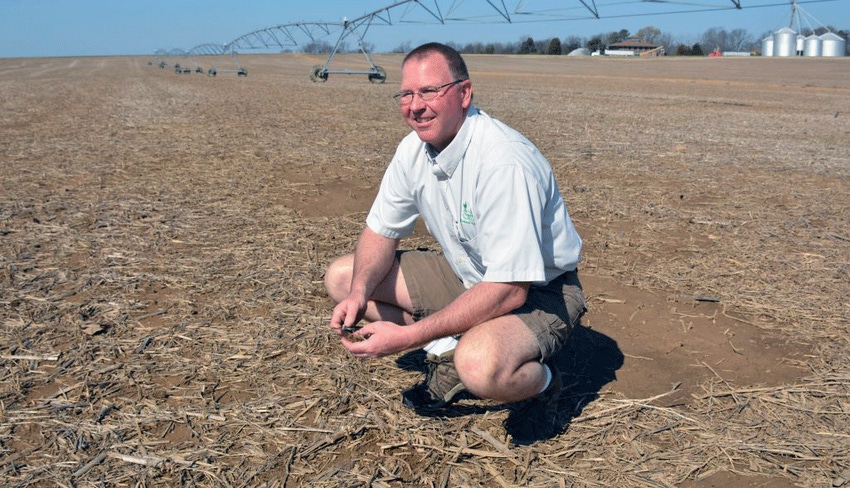
Many factors played a role in David Hula’s record breaking corn yield of 532 bushels per acre last year, but the key to success was uniform emergence, making sure all the corn came up at the same time.
(Editor’s note: Southeast Farm Press visited David Hula’s Charles City, Va., farm in March. This is part three of a three-part series with the corn yield champion.)
“Everybody wants to focus on seed spacing and getting that uniform drop so you have that picket row fence stand. But that in conjunction with getting the corn to emerge uniformly are where your best yields will come in,” says the Charles City, Va. farmer who won the 2015 National Corn Growers Association Yield contest with the highest per acre corn yield of all time. Hula also won the contest in 2013 with another record breaking 454 bushels per acre.
Planting a uniform stand has become much easier for Hula since he switched from a spring-tension-down pressure planter to a John Deere pneumatic planter. Last year Rob Garey, owner of Garey Ag Solutions, a precision ag specialist in Harrington, Del., shared with Hula the value and accuracy of the Delta Force hydraulic down force technology. Hula added Delta Force technology to his planter last year which helped ensure his corn was planted uniformly and emerged at the same time.
Hula says the pneumatic planter combined with Delta Force technology helped ensure that all of his corn was growing in unison. “There was no plant to plant competition. All of the ears were the same height and all of the leaves were the same height,” he adds.
Slowing the planter down is also important to achieve top yields. Hula uses a 2020 monitor and an iPad to monitor his planter speed. He likes to run his planter at 4 or 4 ½ miles per hours and adjust his plant populations. In drouthier soil, he may lower his seedling rates while increasing the rate on his better land.
“With the monitors and sensors on the planters, you can tell if something is working while you are planting. If you don’t mind stopping to fix it, you can address problems before anything that may come up,” Hula says.
Hula plans to plant 23 different hybrids
Planting depth is critical for both uniform emergence and achieving maximum yield. His planting depth is a uniform two inches in all fields, which is easier to achieve with the use of Delta Force technology.
Hybrid selection certainly plays a major role in achieving top yields. “Like all growers, when we evaluate hybrids, we look for yields. The next thing we look for in a hybrid is uniform emergence. Standability is important because on the East Coast we get (named) hurricanes and thunderstorms,” he says.
This year, Hula plans to plant 23 different hybrids, ranging from 99 day to 120 day maturities. “With our different soil types and droughts in the summer, we don’t’ want to put all of our eggs in one maturity basket so we will spread our risk out,” he says.
This year is a challenging one because of low commodity prices, but Hula urges farmers not to cut costs too much because when prices are low, higher yields are all the more important. “When grain prices drop, farmers want to figure out what they can cut. The things that you know that work, you don’t want to cut,” he stresses.
In fact, going for cheaper hybrids is not the way to go because they often won’t yield as well as the more expensive hybrids, Hula notes. In addition, Hula says foregoing seed treatments during times of low prices is not the way to go because seed treatments help improve emergence, control pests and increase fertility.
“Commodity prices have dropped but fortunately so have fertilizer prices. Unfortunately, seed prices and rent has dropped, but some of our other costs have dropped. There is still an opportunity to generate revenue that we can be content with. Don’t just look at the commodity price; you have to look at the whole system. You have to use a systematic approach and step up your management.”
About the Author(s)
You May Also Like






